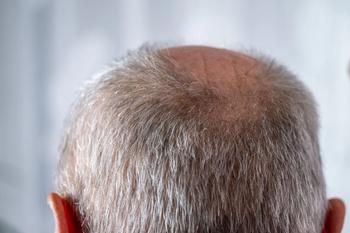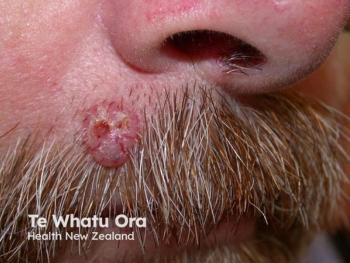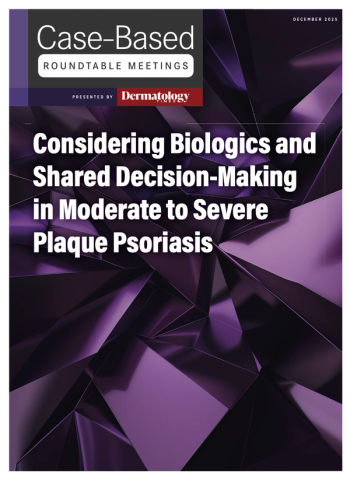
Barzolvolimab Demonstrates Rapid Symptom Reduction in Chronic Spontaneous Urticaria
Key Takeaways
- Barzolvolimab significantly reduced serum tryptase levels and disease severity in patients with severe CSU, showing rapid and sustained effects.
- A high percentage of patients achieved near-complete symptom control, with notable improvements in UAS7 scores compared with placebo.
The monoclonal anti-KIT antibody exhibited promise in adults with moderate to severe antihistamine-refractory CSU.
Barzolvolimab (CDX-0159) demonstrated rapid symptom reduction in a recent study exploring its efficacy in adult patients with moderate to severe antihistamine-refractory chronic spontaneous urticaria (CSU).
The study, published in the European Journal of Allergy and Clinical Immunology,1 reported high percentages of patients achieving well-controlled and complete responses after treatment with the monoclonal anti-KIT antibody vs placebo.
Background and Methods
A study published in 2023 in Allergy reported that barzolvolimab reduced disease activity and skin mast cells in patients with chronic inducible urticaria.2 The first-in-class anti-KIT mAb has also demonstrated improvements in itch and circulating tryptase, leading researchers to examine its effectiveness in CSU, as well.
Researchers conducted a phase 1b, double-blinded, randomized study (
Findings
A total of 93.3% (n=42) of patients completed the 12-week treatment phase. The demographic and disease characteristics were balanced across all study arms, with most participants classified as having severe CSU at baseline. Among barzolvolimab-treated patients (n=35), the median age was 49.3 years, and 80% were women. Duration of CSU varied widely, from as little as 0.6 years to more than 6 decades.
Barzolvolimab demonstrated robust and sustained suppression of serum tryptase. Within days of the initial dose, tryptase levels dropped by more than 90% in the 1.5-mg/kg and higher-dose cohorts and remained suppressed throughout the 12-week dosing period.
Clinically meaningful reductions in disease severity were observed in barzolvolimab-treated patients across all cohorts. By week 12, average UAS7 scores declined substantially, with the 3.0-mg/kg and 4.5-mg/kg groups experiencing reductions of 30 to 35 points compared with baseline. In contrast, placebo-treated patients showed minimal change.
A significant proportion of patients receiving 3.0-mg/kg and 4.5-mg/kg barzolvolimab achieved near-complete or complete symptom control. More than 60% of patients in the highest-dose group reached UAS7 scores below 6 by the end of the treatment period. These rates were notably higher than in placebo recipients, none of whom reached full disease control.
Barzolvolimab was generally well-tolerated, with adverse events being mostly mild to moderate in severity. There was no reported indication of cumulative toxicity or worsening safety profile with ascending dose.
Conclusions
"For patients with severe CSU, symptom control can be difficult to attain with available therapies," the study authors wrote. "This study initially characterizes barzolvolimab as a promising novel treatment in antihistamine-refractory CSU."
The study may have been limited by the small sample size of patients and variation in drugs used prior to the study. Moving forward, researchers noted the importance of larger-scale studies of barzolvolimab in chronic inducible urticaria, of which studies of this nature are ongoing.
References
- Maurer M, Metz M, Anderson J, et al. Anti-KIT barzolvolimab for chronic spontaneous urticaria. Eur J Allergy Clin Immunol. Published online May 26, 2025. doi:
10.1111/all.16598 - Terhorst-Molawi D, Hawro T, Grekowitz E, et al. Anti-KIT antibody, barzolvolimab, reduces skin mast cells and disease activity in chronic inducible urticaria. Allergy. 2023;78(5):1269-1279.
doi:10.1111/all.15585 - A study of CDX-0159 in patients with chronic spontaneous urticaria. ClinicalTrials.gov. NCT04538794. Updated July 19, 2023. Accessed June 9, 2025.
https://clinicaltrials.gov/study/NCT04538794?term=NCT04538794&rank=1
Newsletter
Like what you’re reading? Subscribe to Dermatology Times for weekly updates on therapies, innovations, and real-world practice tips.


















